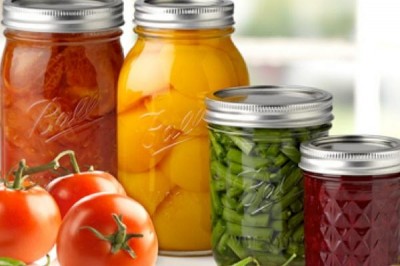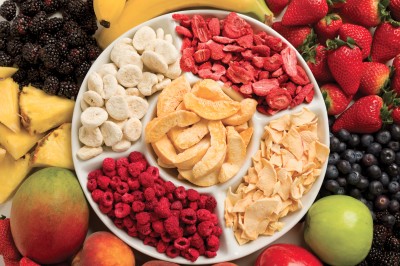As a species we know a lot about food preservation. It started thousands of years ago and it has kept us alive to this day. But in many of those tried-and-true techniques, we sometimes engage in a food preservation process that is emerging more and more as the best approach. It’s called “hurdling.”
Food hurdling is known by other names, including: combination preservation, barrier technology, combination techniques, combined processes, and combined methods. In some respects, we’ve done it before whenever we do any pickling. Pickling is actually a combination of numerous processes and ingredients that collectively kill bacteria, deter microbial growth, prevent spoilage, and preserve flavor, texture and color. That’s hurdling — combining different methods of preservation. Think of it as creating multiple barriers the pathogen must “hurdle” to spoil the food.
The advantage of home-preservation hurdling
Hurdling allows us to avoid some of the extreme measures we sometimes perform with traditional methods. Dry-salting is a classic food preservation technique, but it requires a significant quantity of salt that affects the flavor of the food. A country ham is a good example, and the standard directions require that the ham be soaked in water before eating. If you’ve ever had a slice of country ham, you know what “intense salt” is all about.
The same is true for Lutefisk, a curious and somewhat notorious fish preservation technique that uses lye as the single preservative agent. These single and extreme preservation methods use one ingredient and approach that affect the flavor, texture and appearance of the food and usually require additional steps to make them generally edible. In my personal experience, no amount of steps could make Lutefisk edible.
Without A Doubt The Best Kept Secret In Indoor Self-Reliance Gardening…
Hurdling allows us to combine techniques that are typically milder, because the additive qualities of the different preservation techniques work together to prevent the growth of bacteria and any spoilage without compromising safety or taste, and without adding a flavor component or textural element that is unappetizing or overpowering.
What do we know now?
Before we explore hurdling as a concept, it’s probably best to review the traditional food preservation techniques that you might combine in some new ways. The first is the oldest, with its beginnings 12,000 years ago:
Drying
 Originally, foods were dried in the sun or in a room with a very warm and dry atmosphere. Today, many of our drying efforts are done with dehydrators that carefully manage the dehydration of any water or fluids. The simple removal of fluids retards the growth of bacteria and mold.
Originally, foods were dried in the sun or in a room with a very warm and dry atmosphere. Today, many of our drying efforts are done with dehydrators that carefully manage the dehydration of any water or fluids. The simple removal of fluids retards the growth of bacteria and mold.
Dry-salt curing
This is another ancient food preservation technique that was popular around coastal areas that border an ocean or sea where salt could be harvested. We still use this technique to make Gravlax (a dry-salted salmon), and it’s often used as a “rub” for meats that are to be smoked or barbecued.
Make “Off-The-Grid” Super Foods Secretly In Your Home
The salt concentrations of 20-25 percent kill bacteria and inhibit microbial growth and draw moisture from the food much like drying. It’s also used in a 2-5 percent concentration for the fermentation of foods like sauerkraut and Kim Chi which allows for the production of lactic acids to kill bacteria and prevent their growth.
Brine (wet-salt) curing
This is another ancient technique, except the salt was dissolved in water or a liquid like wine or vinegar, and the food to be preserved was immersed in this very salty solution or “brine” allowing it to absorb the salt through “osmosis” or the molecular exchange of the sodium chloride or salt molecules into the meat or vegetables. The high concentration of salt (10-15 percent) had the same effect on microbes as dry-salt curing. The percentages are lower than the 20-25 percent for dry-salting, because the brine more effectively permeates the food and serves to keep the food moist as opposed to the desiccating effects of dry-salt curing.
Sugar-curing
Sugar also draws moisture from food and would sometimes be caked around food to prevent airborne bacteria from coming in contact with the surface. This type of curing is often used with fruit, with candied orange peel as a good example. Food was also immersed in honey to act as a barrier to bacteria, and because of the natural preservative power of honey. In fact, honey in clay jars was discovered in a 3,000 year-old Egyptian tomb and found to be not only edible but free of microbes.
Cooling
Cooling is the fundamental concept of refrigeration. Cooler temperatures in and of themselves inhibit but do not stop bacterial growth nor kill most bacteria present.
Freezing
Ancient people who lived in far northern and southern latitudes were quick to discover the food preservative qualities of freezing. Freezing kills most bacteria and prevents microbial growth. It also acts as a barrier to bacteria and over time serves to dehydrate foods (often whether we want it to or not, resulting in “freezer burn.”)
Heating
While heating is often a step in the processing of canned and pickled foods, and to a certain degree smoked and dried foods, there is another heating technique that also has a historical precedent for food preservation. It’s the constant and steady application of heat to consistently kill bacteria and prevent spoilage. An example is the “Skilligalee Kettle.”
Skilligalee
Camp cooks on cattle drives kept a large kettle of water at a constant simmer over an open fire. All of the trimmings from vegetables and meats were added to the pot on a daily basis, along with additional water to create an ever-changing and everlasting broth. The idea was that men coming back to camp from the range could grab a cup of broth to satisfy their hunger rather than pestering the camp cook. It’s safe to say that more than a few cowboys realized the benefits of bone broth long before it became a food fad.
Smoking
Smoked meats and seafood are another ancient technique that we have refined quite a bit, and we often add a hurdle approach to this concept as well. Before we smoke, we trim the meat or seafood. And then we cure. And then many of us allow the meat to air-dry to form a “pellicle,” or dried/glossy surface. And then we smoke it, which subjects the meat or seafood to both smoke and heat. Like pickling, this is another example of how we create barriers to bacterial growth or “hurdles” as a result of a combined series of actions.
Cellaring
 Think “Root Cellar.” A hole in the ground with a roof over the top and some shelves for storage. That’s the root cellar I remember. The deep trench is naturally cool and the overhead roof keeps it dark. This is another ancient technique that still works as simply as stacking root vegetables unwashed in the natural humidity and everyday low temperature of a root cellar.
Think “Root Cellar.” A hole in the ground with a roof over the top and some shelves for storage. That’s the root cellar I remember. The deep trench is naturally cool and the overhead roof keeps it dark. This is another ancient technique that still works as simply as stacking root vegetables unwashed in the natural humidity and everyday low temperature of a root cellar.
Discover The World’s Healthiest Storable Survival Food!
There’s still a long list from jellying to bottling, jugging and burying, but the telegram is simple: Single preservation techniques worked in ancient times but a combination of techniques can provide better tasting food with greater safety and longer shelf-life. In fact we’ve already done that and should consider extending the concept and the behavior.
So … how do we hurdle?
When we practice hurdling, we combine multiple preservation techniques — like brining and rinsing fruit, before preserving it in sugar and freezing it. That’s unusual but it’s a set of hurdles that could work. Chart possibilities. When in doubt, default to classic approaches. When confident, experiment wisely. Here are some tips:
- Respect the basics. Our ancestors knew something and learned it the hard way. Don’t forget their ideas. Learn them and respect them.
- Understand the dynamics of food preservation. Get beyond the recipe to a conceptual appreciation of what makes food preservation work. Understand the science.
- Master the basics. Before you attempt food hurdling, make sure you know what you’re doing. Do you know how to make a 10 percent brine? What’s the best canning pressure and time for vegetables in general? Is maple syrup equal to honey as a preservative? Do your homework.
- Evaluate. look at appearance; smell it; give it a small taste. Don’t get cocky — play it safe
To hurdle or not to hurdle?
When it comes to your home food preservation efforts, you are creating hurdles to bacterial growth with everything you do. Your only question is how many hurdles do you want to put in front of those microbes and how? You can simplify some efforts and improve taste and quality with others. Extend shelf life, too. Many long-term food storage companies use this process to extend shelf-life and enhance other positive factors. Whether or not you want to extend those practices beyond traditional efforts is up to you.
What combination of food preservation techniques do you use? Share your tips in the section below:
Do You Know The Trick To Keep Food Cool When The Power’s Out? Read More Here.
 Off The Grid News Better Ideas For Off The Grid Living
Off The Grid News Better Ideas For Off The Grid Living





